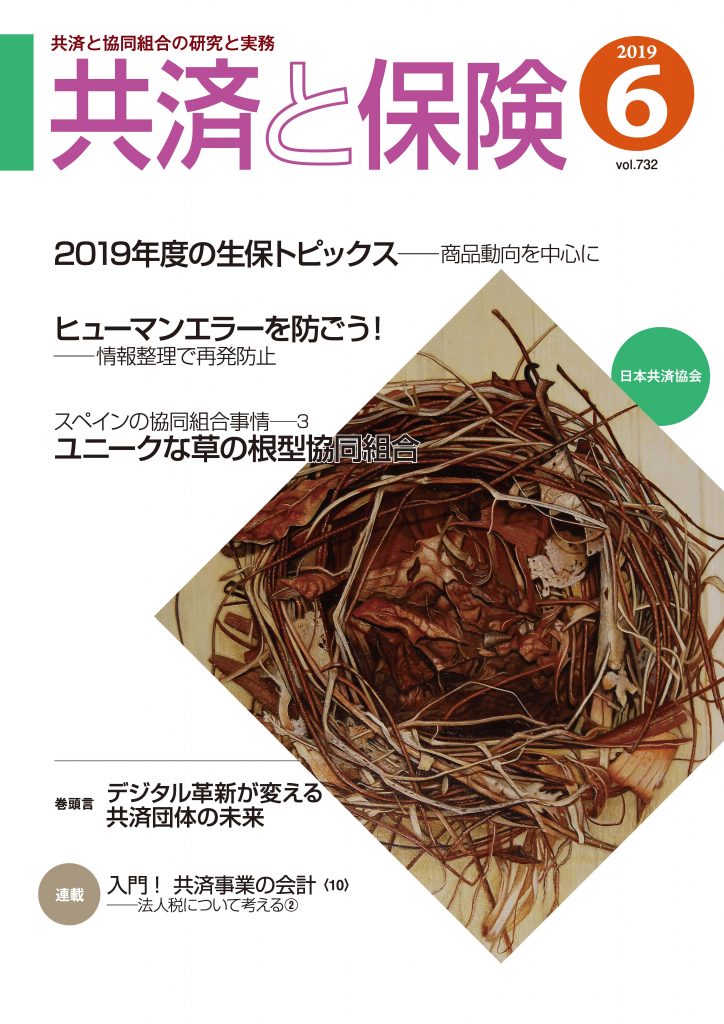 This is a reprint and a translation with permission of the report by Ms. Miho Onzo, Professor at Faculty of Commerce, Takachiho University in Japan that was published in the June 2019 issue of the monthly magazine “Cooperative and Commercial Insurance” issued by Japan Cooperative Insurance Association Inc. (JCIA), an ICMIF and AOA member.
This is a reprint and a translation with permission of the report by Ms. Miho Onzo, Professor at Faculty of Commerce, Takachiho University in Japan that was published in the June 2019 issue of the monthly magazine “Cooperative and Commercial Insurance” issued by Japan Cooperative Insurance Association Inc. (JCIA), an ICMIF and AOA member.
Digital Innovation will Change the Future of Cooperative and Mutual Insurance Organizations
In December 2018, I attended a seminar in Hong Kong, held by the AOA (Asia and Oceania Association of the ICMIF). The theme was “Impact of digital innovation on the strategies of our sector.”
As many of you may know, AOA is a regional association of the ICMIF (International Cooperative and Mutual Insurance Federation), which is the only international federation that represents cooperative and mutual insurance organizations around the world. AOA was established in 1984 for the purpose of promoting friendships and exchanging information among ICMIF members in the Asia-Oceania region. As of October 2018, it has 46 member organizations in 13 countries.
The AOA Seminar is held once every two years, and the 2018 seminar dealt with the influence of the evolution of digital technologies such as AI, IoT, and Blockchain on each business aspect of the cooperative and mutual insurance sector as well as the broader insurance industry. The seminar was based on the fact that cooperative and mutual insurance organizations in this region also widely shared awareness of the issue on how to respond to such evolution. They have been facing major challenges: how they can incorporate digital innovation into business, how they can utilize it for the sake of members and policy holders, and what they need to consider in the process of utilizing it. There were 83 participants from 28 member organizations in 11 countries in the seminar, which demonstrates how much each member organization in each country has interest in this theme. Representing Japan, ZENKYOREN (National Mutual Insurance Federation of Agricultural Cooperatives) and JCIF (Japan CO-OP Insurance Consumers’ Co-operative Federation) delivered reports respectively.
* * *
After having participated in the AOA Seminar for the first time, I have found that Asia is now the biggest engine for the global insurance market. Investment in InsurTech has been rapidly expanding. During the seminar, when I listened to reports on how to utilize digital technologies, many cases aroused my interest.
We often hear reports about microinsurance provided to the poor or people who could otherwise not afford insurance. During the seminar, a representative from Indonesia reported an intriguing case in which they constructed a platform in a short period of time so that they could provide mobile loans to entrepreneurs who had been affected by the 2018 tsunami in Indonesia. Since these entrepreneurs were core members of their local community, it was able to recover quickly with their help. Moreover, the platform has been designed as a mechanism that is sustainable thereafter. This case proves that Blockchain, which enables mobile loans, is an effective tool for people who could otherwise not afford insurance.
In Hong Kong, cooperative and mutual insurance organizations are taking measures for people who cannot get insurance such as diabetic patients. For pregnant women, they provide a free genomic DNA testing service as part of preventative public health in view of health in five or ten years, rather than aiming to sell insurance at this time. As in this case, one of the characteristics of cooperative and mutual insurance organizations may be that they are considerate of cooperative members and policy holders from a mid- and long-term perspective.
In India, digital innovation has allowed people to work at home, eliminating the need for going to office. And yet, according to the episode presented in the seminar, family members became increasingly anxious when they saw their family head staying at home and not going to work. After all, heads of families have adopted a new practice of gathering together and working in a certain place other than their homes. This is a typical case in which innovation does not work for cultural reasons.
* * *
And now, let me compare Japan with other countries. Especially in the context of the life insurance sector, we are in the early days of InsurTech. And yet, the relevant Japanese parties are also surely engaged in activities deeply rooted in the cooperative and mutual insurance organizations’ philosophy of “to ensure no one is left behind,” which Mr. Shaun Tarbuck, Chief Executive of the ICMIF, mentioned at the 2018 seminar. For example, a cooperative organization incorporates voices of members to develop insurance products with lenient conditions for declaration of insured so that even a child with asthma can be insured. It also offers promotion services to support activities to improve local livelihoods and provides workshops for cooperative members.
A while ago, I heard a story where a delivery-consigned staff member of a cooperative had seen an injured child at the delivery destination and, on the spot, he checked if the parents did not forget to claim the benefit. I think this story demonstrates the “essence of cooperative and mutual insurance” as it shows self-awareness and consciousness of acting for members on a constant basis. However, it has become increasingly difficult for cooperative staff to take such a flexible response as shown in the above episode in the recent situation where certain factors get in the way, such as labor shortage and the prohibition for the delivery staff to solicit their members to join the cooperative.
As presented in the AOA Seminar, the utilization of digital technologies helps reduce burdens on Japanese cooperative organization staff members as well as enhancing services for cooperative members. I hope that these organizations build a mechanism that will enable them to forge good relationships with their members in a new way by referring to some digital innovation cases from other countries.
* * *
It is also important to constantly and solidly proliferate information on the “essence of cooperative” that has been worked on since before through utilization of new digital technologies. It may tackle unsolved problems, such as the homogenizing of commercial insurance and cooperative.
Digital innovation has been advancing technologies for discovering needs, which enables cooperative and mutual insurance organizations to respond to various needs of their members and policy holders. These organizations are about to shift to truly customer-focused entities. They have advantages in considering their relationships with their members and policy holders from a long-term perspective, and therefore have much potential to provide various solutions to these members and policy holders. In that sense, digital technologies will enhance the possibility of embodying the situation where “no one is left behind” under the mutual aid spirit even for people who cannot get insurance. Expectations for young staff members, i.e. bearers of the future, have been growing more and more.
For the first time, the AOA provided an interactive and networking program for young staff members as a side event to the main agenda of the seminar. In total, 23 young staff members from 10 organizations in four countries attended this program, in which they actively interacted. The future of cooperative and mutual insurance organizations with the mutual aid spirit will depend on young staff members who will be able to make full use of digital technologies.





